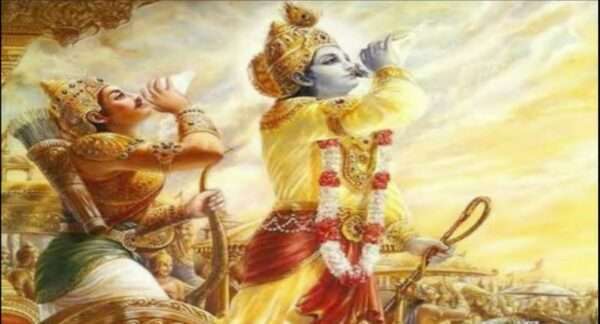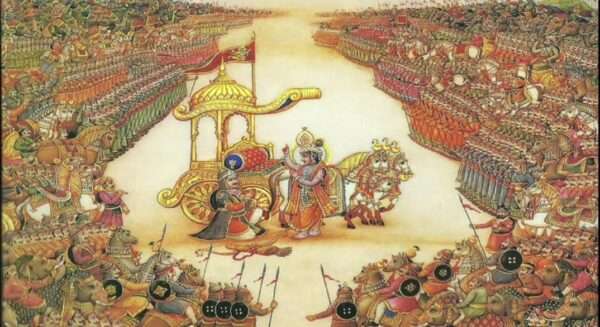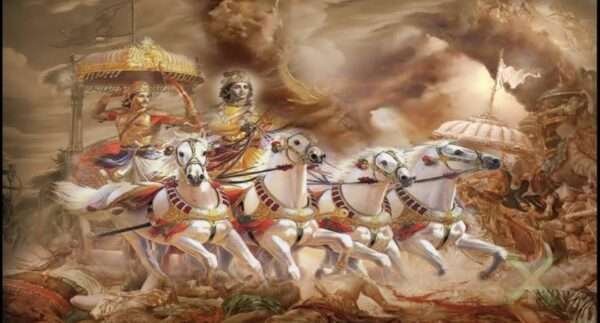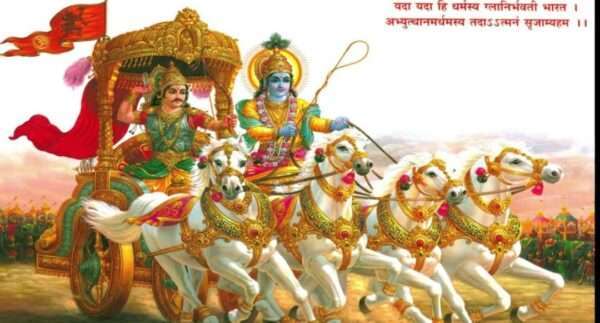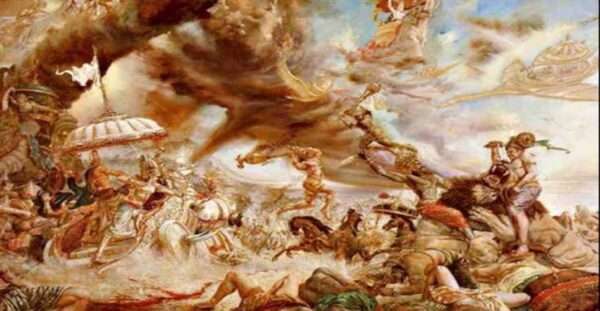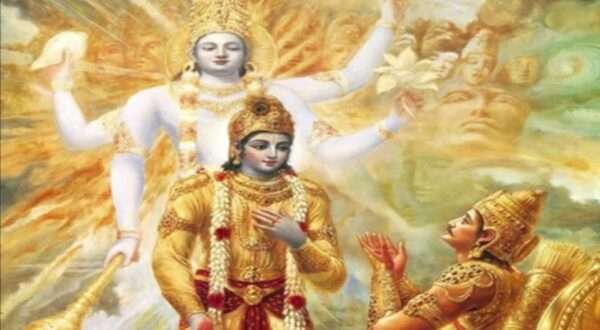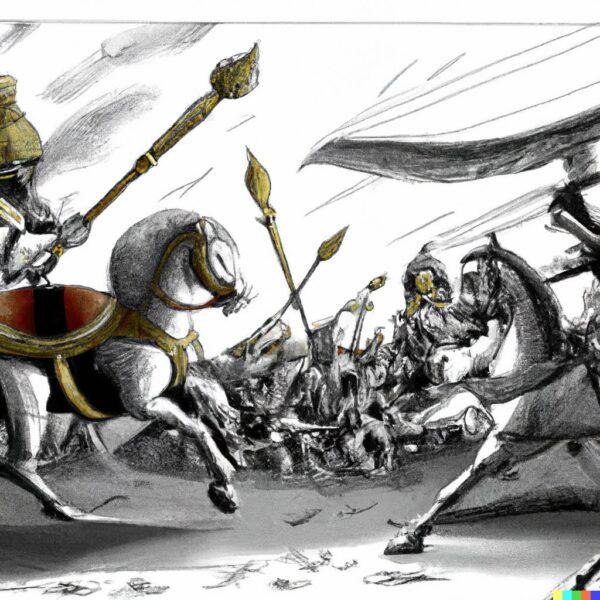Category Bhagavad Gita
In the final chapter of the Bhagavad Gita, Lord Krishna imparts profound wisdom on the paths of renunciation and selfless action. He advises Arjuna to perform his duties with devotion and surrender to the Divine. Krishna emphasizes the significance of detaching from the fruits of actions, understanding that selfless service leads to spiritual liberation. This chapter serves as a powerful conclusion, guiding individuals towards the path of righteousness, inner peace, and ultimate union with the eternal truth.
Chapter 17 delves into the threefold division of faith, revealing how it shapes human behavior and actions. Lord Krishna emphasizes that our nature and belief systems influence our offerings, penance, and dietary choices. He explains that faith grounded in purity, selflessness, and goodness leads to positive outcomes, while faith tainted by ignorance or selfish desires may yield adverse consequences. This chapter encourages self-awareness and introspection, inspiring individuals to align their actions with their highest values and beliefs.
“Embracing the Divine Within: The Virtues and Vices Explored in the Bhagavad Gita” In Chapter 16 of the Bhagavad Gita, Lord Krishna elucidates the stark contrast between the divine and the demoniac natures. He describes the virtues that lead to… Continue Reading →
In Chapter 15, Lord Krishna uses the metaphor of a cosmic banyan tree to illustrate the nature of existence. The tree symbolizes the material world, with its roots representing the foundation of material existence and its branches signifying various realms of creation. Krishna encourages seekers to connect with the eternal root, the Supreme, in order to attain liberation from the cycle of birth and death, and merge with the transcendental reality.
Chapter 14 of the Bhagavad Gita explores the three modes of material nature—goodness, passion, and ignorance—that influence human behavior. Lord Krishna explains how these modes shape individual tendencies and actions. Understanding these qualities allows one to transcend their influence and cultivate a higher consciousness, ultimately leading to spiritual progress and self-realization.
In Chapter 13, Lord Krishna elucidates the distinction between the perishable body and the imperishable soul. He emphasizes the eternal nature of the soul, which transcends physical existence. Krishna highlights the importance of discerning between the two and understanding the true essence of the self, leading to self-realization and liberation from the cycle of birth and death.
In Chapter 11 of the Bhagavad Gita, Arjuna is granted a divine vision by Lord Krishna. Overwhelmed, Arjuna witnesses Krishna’s majestic universal form, encompassing countless cosmic manifestations. The sight fills him with awe and reverence, leading him to acknowledge Krishna’s supreme power and seek guidance in his path.
This chapter begins with Shree Krishna describing the material and spiritual dimensions of God’s energies. Paramahamsa Vijnana Yoga (The Yoga of Knowledge and Wisdom): Lord Krishna reveals His divine manifestations and proclaims that everything in the universe emanates from His supreme consciousness. He emphasizes the importance of unwavering devotion and knowledge of His true nature.
Abhyasa Yoga (The Yoga of Self-Control): Krishna elucidates the path of meditation and self-discipline. He encourages Arjuna to control his mind, body, and senses through regular practice, paving the way for spiritual evolution. . It discusses why we should strive to follow this path, outlines the qualifications required to do so, and gives instructions on how to meditate properly. The concept of yoga as a means of attaining oneness with the divine is also discussed.
The chapter describes the path of karma yoga, which is the discipline of selfless action. The chapter explains that one should perform their duties without attachment to the outcome, and instead focus on the action itself as an offering to God. “Karma-yoga” teaches to do actions selflessly, without attachment to the outcome, as an offering to god.
Sankhya Yoga (Transcendental Knowledge): Lord Krishna imparts profound wisdom to Arjuna, emphasizing the eternal nature of the soul and the impermanence of the physical body. He advises Arjuna to fulfill his duty as a warrior without attachment to the outcome, promoting the concept of selfless action.
Arjuna Vishada Yoga (The Yoga of Arjuna’s Dejection): The epic begins with the warrior Arjuna overwhelmed by doubt and despair on the battlefield of Kurukshetra. He is torn between his duty as a warrior and the moral dilemma of fighting his own relatives and teachers. Seeking guidance, Arjuna turns to Lord Krishna, his charioteer, for counsel.
What is the Bhagavad Gita? The Bhagavad Gita as most of the world knows is a sacred Hindu scripture. The reason behind creating this category and including the Bhagavad Gita in this website is to present the entire text in… Continue Reading →
